Mountain Climber Exercise
What is Mountain Climber Exercise?
Mountain climber exercises are a powerful bodyweight workout that works for several muscular groups simultaneously, enhancing blood circulation, strength, flexibility, balance, agility, and coordination. Mountain climbing is a high-intensity interval training (HIIT) exercise.
Mountain climber exercises are an excellent method to build your arms, back, shoulders, core, and legs because they are a complex exercise that works for several muscle groups throughout your body.
Using several muscles at once also raises your heart rate, which increases your calorie expenditure. Therefore, if you want to increase the definition of your abdominal area, this is a terrific exercise.
Additionally, mountain climbers can enhance your general stability, joint movement, and response speed. The good news is that you can try this exercise without having to hike to the closest peak! Since you may execute mountain climbers anywhere and at any time, you don’t require any equipment. Continue reading to learn our best advice and a detailed how-to for performing a mountain climber.
Which muscles are used in Mountain Climber Exercise?
- An efficient bodyweight workout that engages a variety of muscles is the mountain climber.
- The primary function of the shoulder, triceps, chest, serratus anterior, and abdominal muscles is to support your body against gravity when you are in a plank position.
- During the workout, your legs are moved by the contraction of your glutes, quadriceps, hip flexors, hamstrings, and calves.
The Advantages of Mountain Climber Exercise
Since mountain climbers are typically done quickly, they’re a fantastic way to strengthen your heart and work well as part of a HIIT program.
Adults with low levels of physical activity can enhance their cardiovascular function by participating in mountain climbers, which is a whole-body, high-intensity interval training exercise. They may lower the risk of cardiovascular disease if done regularly.
For novices, it is preferable to do them at a slow, controlled tempo. Furthermore, mountain climbers begin in the plank position, which is an outstanding exercise for strengthening the core.
How to perform Mountain Climber Exercise properly
- Start by getting down on your hands and knees on the floor. Bring your hands shoulder-distance apart and position your shoulders above your wrists.
- Spread your fingers apart and press the space between your thumb and index finger into the mat to properly stabilize the shoulders and upper torso.
- To maintain the alignment of your body straight from heel to head, step your right leg back towards a high plank position.
- The left leg should be stepped right back till it touches the right leg in the plank posture.
- Verify the neutrality of your spine.
- Continue to feel as though you are pressing your hands into the ground and raising the area between your shoulder blades a little bit toward the ceiling. Your serratus anterior will be better activated if you do this.
- Fix your eyes on a location on the floor directly in front of your hands while maintaining a straight neck and spine.
- Step your right leg again into a plank posture after using your core muscles to bend it toward your chest.
- Repeat with your left leg, stepping it back after bringing it close to your chest.
- This is one mountain climber repetition.
- Change your legs at the same time so that one leg is going forward and the other is going backward for a quicker tempo.
- Perform two to three sets of ten to fifteen slow, controlled repetitions as part of a program that focuses on building muscle strength and fitness.
- As part of a HIIT-focused cardiovascular program, complete 6–8 rounds of rapid mountain climbers, each lasting 20 seconds and interspersed with 10-second breaks.
Mountain Climber Exercise Video
Different types of Mountain Climber Exercise
There are several ways to make the action less difficult, more difficult, or just more inventive if you’re seeking a change from the standard mountain climber exercise.
Incline modification
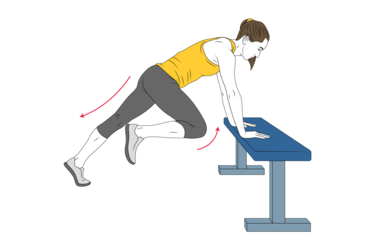
- Perform the exercise as described above, placing your hands on a bench or step to establish an incline plank position.
- This alternative places less strain on your upper body and wrists, which is beneficial if you need to consider injury or want to gradually increase your strength in these areas.
- For people who struggle to maintain proper form in a plank posture, it is also somewhat simpler to be on an incline.
- Your abdominal muscles will be less used if you are higher off the ground than if your hands are on the ground.
- However, other studies indicate that movements like mountain climbers, which combine core activity with deltoid and glute recruitment, activate the lumbar and ab muscles more than more conventional ab exercises like crunch.
Pushup handles modification
- To change your hand and grip position, hold onto the pushup handles.
- Compared to placing your hands flat on the floor, this reduces the amount of wrist extension.
- If you have problems with your fingers or wrists, it might feel more comfortable.
Twist variation

- Instead of raising both knees straight forward toward your chest, bring your right knee near your left upper arm and your left knee toward your right upper arm while in the plank position.
- Maintain a level shoulder position above your wrists. If you keep your arms and upper body stable, you’ll see a twist in your waist.
- Compared to ordinary mountain climbers, adding rotation strengthens the oblique muscles in the sides of your torso.
Semicircle variation
- Pull your right leg to the outside of your torso, toward your right elbow, and then back to the starting position while maintaining a plank position with your hands fixed.
- Next, form a semicircle by drawing your left leg to the outside of your left elbow.
- This enjoyable variant adds side bending to standard mountain climbers, which means it works the quadratus lumborum and other back muscles in addition to the oblique muscles of the abdomen.
Decline plank progression
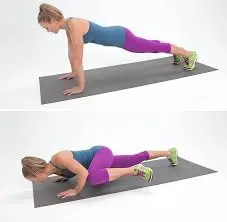
- To form a decline plank, place both feet up on a bench.
- If you want to strengthen your upper body, this progression is a wonderful choice because it is more strenuous for your shoulders.
Burpee or pushup progression
- It’s a wonderful idea to combine mountain climbers with other exercises like burpees and pushups to keep yourself motivated, especially after you get acclimated to them.
- As part of a HIIT program, try doing four mountain climber repetitions followed by two pushup or burpee repetitions, then repeat this sequence for 30 seconds.
How to Include Mountain Climber Exercise in Your Workout?
The mountain climber is an extremely versatile bodyweight exercise that can be incorporated into your workout in a variety of ways. You can repeat the movement for a certain number of reps, with a knee drive with both legs counting as one rep. You could be better off spending your time with mountain climbers.
Setting a timer for 6 minutes and then doing rounds of 20 seconds of labor and 10 seconds of rest, making careful to push hard throughout each work phase. You can even work for longer periods, such as 30 seconds or more. Just make sure you maintain a powerful position with your core engaged and your hips lower than your shoulders.
Instructions for Mountain Climber Exercise
- Using an exercise mat is the greatest option for both hand comfort and preventing slippage.
- Regarding technical difficulties, it’s typical for mountain climbers to have their hips rise too high, forming a triangular or downward dog configuration.
- Additionally, your head would droop too low in this position.
- On the other hand, your hips may occasionally fall too low, causing your lower back to arch excessively.
- Keep your head in alignment with the rest of your spine, your hips in alignment with your shoulders, and your eyes slightly forward at a spot on the floor in front of you.
- In this manner, you will benefit from strengthening your abdominal muscles as well as your upper body.
Safety and Precautions for Mountain Climber Exercise
Your ability to adopt and maintain a correct plank stance is crucial for mountain climbers of all stripes. This involves making certain that:
- You are holding your hands and arms straight down from your shoulders.
- Your back is flat and straight rather than arched or bent.
- Your butt shouldn’t be in the air, and your hips aren’t lifted.
- Review the correct planking form to make sure the move is safe and successful. Poor form when performing a plank might increase your risk of injury and significantly lessen the benefits of using mountain climbers in your training regimen.
- If you have shoulder or pelvic injuries or instabilities, you should stay away from mountain climbers.
- Although mountain climbers are a fantastic way to strengthen your knees, you should see your doctor or physical therapist before incorporating them into your routine if you have had surgery or require it (for example, to replace an arthritis-affected joint or repair a sports-related injury).
- You may have diastasis recti, a disorder in which the muscles of your abdomen separate if you have recently been pregnant or have undergone some type of abdominal surgery. You should refrain from doing any core exercises and mountain climbers till this condition fully recovers.
Summary
- A workout that can be adjusted to numerous levels is mountain climbing.
- To begin with, do them slowly and deliberately, using your legs to march while paying attention to proper form.
- Afterward, advance to running with your legs, incorporating increasingly difficult variations and mountain climbers into your normal HIIT routine to improve cardiovascular health.
FAQs
Mountain Climber: Is it a chest workout?
In particular, mountain climber workouts target your back, shoulders, arms, legs, glutes, chest, and core. For a twist on the classic burn, try a few mountain climber variations in your next workout. Some will focus more on some of these body parts than others.
For abs, are mountain climbers sufficient?
If done correctly, mountain climbers are a greater ab workout than crunches. Here’s how to perfect your method. Without a gym, mountain climbers are a great way to strengthen your core. Common errors that might reduce the effectiveness of an exercise include lifting the hips or caving the lower back.
Which muscles are used by mountain climbers?
The shoulders, hamstrings, core, triceps, quadriceps, and other muscles are all worked by mountain climbers. It is frequently seen as a full-body workout as a result.
Do mountain climbers help you lose belly fat?
Mountain climbers can help you lose body fat if you maintain a calorie deficit, which is essential for fat loss.
What are the advantages of standing mountain climbers?
Because it engages all of your muscles, both above and below the waist, the mountain climber is a widespread exercise. You’ll also feel your heart racing as your arms, legs, and core work together to complete the movement.
References:
- Cpt, P. W. (2024, May 19). Learn to master mountain climbers. Verywell Fit. https://www.verywellfit.com/mountain-climbers-exercise-3966947
- Nasm, B. W., & CSCS, E. S. (2022, April 13). How to do mountain climbers the right way. Men’s Health. https://www.menshealth.com/fitness/a28775134/mountain-climber-abs-workout/
- How to do Mountain Climbers. (n.d.). PureGym. https://www.puregym.com/exercises/full-body/mountain-climbers/
- Ba, G. R. (2022, March 10). What muscles do mountain climbers work? Healthline. https://www.healthline.com/health/fitness/what-do-mountain-climbers-work#bottom-line

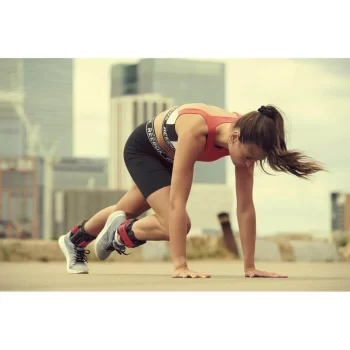


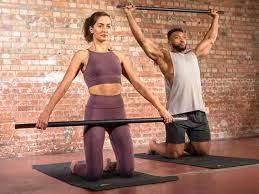
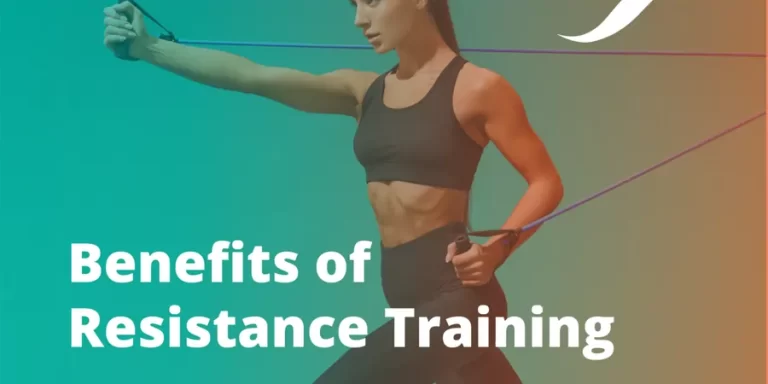


One Comment